Mounted N-BK7 Reflective Neutral Density Filters

- Optical Densities from 0.1 to 4.0
- N-BK7 Substrate with Inconel Coating
- Mounts Engraved with Optical Density
ND01A
Ø25 mm Filter in
SM1-Threaded Mount
ND510A
Ø1/2" Filter in
SM05-Threaded Mount
ND10A
Ø25 mm Filter in
SM1-Threaded Mount
ND2R40A
Ø2" Filter in
SM2-Threaded Mount
NDK01
Kit Containing 10 Ø25 mm ND Filters (Not to Scale)

Please Wait
| Neutral Density Filter Selection Guide |
|
|---|---|
| Absorptive | |
| Uncoated (400 - 650 nm) |
Mounted |
| Unmounted | |
| Uncoated (1000 - 2600 nm) |
Mounted |
| Unmounted | |
| AR Coated (350 - 700 nm) |
Mounted |
| Unmounted | |
| AR Coated (650 - 1050 nm) |
Mounted |
| Unmounted | |
| AR Coated (1050 - 1700 nm) |
Mounted |
| Unmounted | |
| Variable | |
| Reflective | |
| UV Fused Silica (200 - 1200 nm) |
Mounted |
| Unmounted | |
| N-BK7 (350 - 1100 nm) |
Mounted |
| Unmounted | |
| ZnSe (2 - 16 µm) |
Mounted |
| Unmounted | |
| Wedged UVFS (200 - 1200 nm) | |
| Wedged N-BK7 (350 - 1100 nm) | |
| Wedged ZnSe (2 - 16 µm) | |
| Variable | |
| Neutral Density Filter Kits | |
Features
- Ø1/2" (12.7 mm) Filters in SM05-Threaded Cells
- Ø25 mm Filters in SM1-Threaded Cells
- Ø50 mm Filters in SM2-Threaded Cells
- Mount is Engraved with Item Number and Optical Density
- Attenuation in the Visible and NIR Spectral Regions (See Graphs Tab)
- Optical Densities Ranging from 0.1 to 4.0
Thorlabs' Mounted N-BK7 Reflective (Metallic) Ø1/2", Ø25 mm, and Ø50 mm Neutral Density (ND) Filters provide uniform attenuation over the broad spectral range from 350 to 1100 nm. These filters have optical densities ranging from 0.1 to 4.0; refer to the Specs tab above for detailed information about the average transmission obtained with each of our reflective neutral density filters. The Graphs tab contains plots of the transmission and reflection for each filter for a broad wavelength range.
These filters consist of a N-BK7 glass substrate with a metal (Inconel) coating. Inconel is a metallic alloy that ensures flat spectral response from the UV to the near IR. Unprotected metal coatings like this should only be cleaned by blown air, never touched, as contact may cause scratching to the unprotected surface. Although these are reflective ND filters, the Inconel coating does absorb some of the incident light, which limits the use of these filters to low-power applications. Inconel is resistant to aging under normal conditions; however, it will oxidize at elevated temperatures. To prevent oxidation, Thorlabs recommends using these ND filters at temperatures below 100 °C. To achieve the best performance, light should be incident on the side with the Inconel coating; this allows attenuation to occur before etalon effects occur within the filter's substrate.
All of our mounted filters are housed in an SM-threaded housing for compatibility with our lens tube systems. For more information on the specifications of the housing's threads, see the Threading Specs tab. If desired, a mounted filter can be removed from its housing by unscrewing the retaining ring that secures the filter to the mount. Thorlabs offers a range of spanner wrenches that are an ideal match to these retaining rings. The filters on this page are also available unmounted. The equivalent unmounted filter is listed in the drawing for each mounted filter, accessible through the red docs icons (![]() ) below.
) below.
We offer a variety of robust storage boxes designed to hold 25 mm and 50 mm mounted filters, which can be found at the bottom of this page.
Other reflective ND filters in Thorlabs' offering include UV fused silica filters and variable ND filters, as well as a complete line of absorptive ND filters in several sizes; the Selection Guide table to the right contains links to all of the available options.
Please note that these products are not designed for use as laser safety equipment. For lab safety, Thorlabs offers an extensive line of safety and blackout products, including beam blocks, that significantly reduce exposure to stray light.
Optical Density and Transmission
Optical density (OD) indicates the attenuation factor provided by an optical filter, i.e. how much it reduces the optical power of an incident beam. OD is related to the transmission, T, by the equation

where T is a value between 0 and 1. Choosing an ND filter with a higher optical density will translate to lower transmission and greater reflection of the incident light. For higher transmission and less reflection, a lower optical density would be appropriate. As an example, if a filter with an OD of 2 results in a transmission value of 0.01, this means the filter attenuates the beam to 1% of the incident power. Please note that the transmission data for our neutral density filters is provided in percent (%).
| General Specifications | |||
|---|---|---|---|
| Filter | ND5xxA | NDxxA | ND2RxxA |
| Substrate | N-BK7a | ||
| Mountb | SM05 Threading | SM1 Threading | SM2 Threading |
| Diameter (Unmounted) |
12.7 mm | 25.0 mm | 50.0 mm |
| Diameter Tolerance (Unmounted) |
+0.0 / -0.2 mm | ||
| Thickness (Unmounted) |
1.0 ± 0.1 mm | 2.0 ± 0.1 mm | |
| Clear Aperture | 90% Unmounted Optic Outer Diameter | ||
| Surface Accuracyc | <2λ | <2λd | |
| Surface Quality | 40-20 Scratch-Dig | ||
| Parallelism | <20 arcmin | <30 arcsec | |
| Optical Density Tolerance | ±5% | ||
| Optical Density | Damage Thresholds | |
|---|---|---|
| 0.3 | CWa | 16 W/cm (532 nm, Ø0.051 mm) |
| Pulsed | 0.025 J/cm2 (532 nm, 10 ns, 10 Hz, Ø0.493 mm) | |
| 1.0 | CWa | 5 W/cm (532 nm, Ø0.019 mm) |
| Pulsed | 0.025 J/cm2 (532 nm, 10 ns, 10 Hz, Ø0.566 mm) | |
| 2.0 | CWa | 10 W/cm (532 nm, Ø0.365 mm) |
| Pulsed | 0.025 J/cm2 (532 nm, 10 ns, 10 Hz, Ø0.493 mm) | |
| For Detailed Plot Information | |
|---|---|
| |
For individual transmission and optical density plots, as well as Excel files with raw data, click on this icon in the product tables below. |
| An Excel file with transmission and reflectance data for all N-BK7 Reflective ND filters is also available. | |
| Optical Density | Transmission | Reflectance |
|---|---|---|
| OD 0.1 - 0.9 | 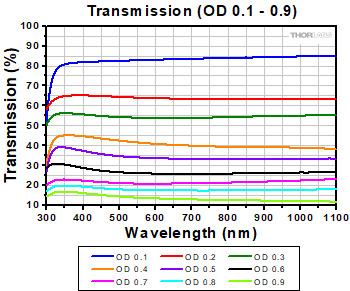 Click to Enlarge |
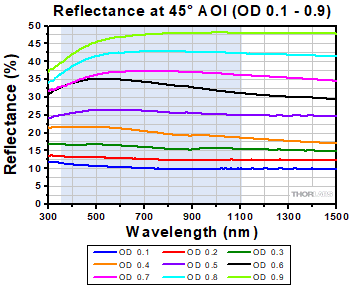 Click to Enlarge |
| OD 1.0 - 2.0 | 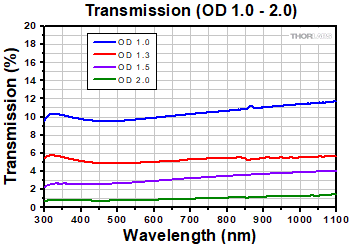 Click to Enlarge |
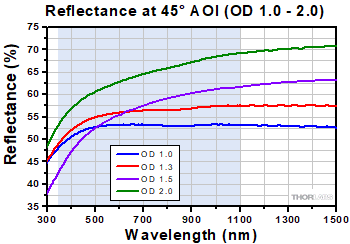 Click to Enlarge |
| OD 3.0 - 4.0 | 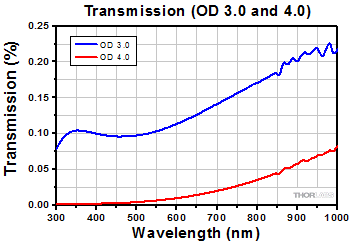 Click to Enlarge |
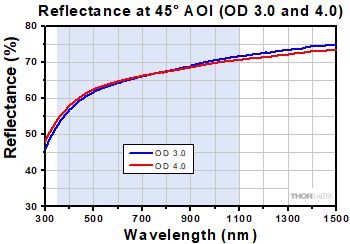 Click to Enlarge |

Click to Enlarge
Water Spectrum as Recorded Through a Standard and Wedged ND filter
Comparison of Standard and Wedged ND Filters
We present laboratory measurements on the difference in the etalon effect between our standard reflective neutral density (ND) filters and our wedged reflective ND filters. In many broadband scattering or absorption measurements, it is important to understand how intensity fluctuations through the utilized optics can impact the measurement. While it is known that parallel surfaces introduce significant wavelength-dependent intensity fluctuations, we find that utilizing a wedged geometry significantly reduces these etalon effects.
For our experiment we used the SLS202 Stabilized Light Source as the broadband, fiber-coupled light source. The F260FC-C Fiber Collimator, held in the KAD11F Kinematic Pitch/Yaw Adapter, collimates the light out of the fiber. The collimated light is incident upon the ND filter that is being investigated before entering the OSA203B Optical Spectrum Analyzer. The OSA has a spectral resolution of 7.5 GHz (0.25 cm-1) and the traces were averaged (>100 scans) in order to reduce noise and allow for more accurate analysis. The data focused on a wavelength range of 1820 - 1845 nm, which covers the NIR water spectrum. Since the absorption spectrum of water is well known, it is ideal to use as a comparison to evaluate the performance difference between these two styles of ND filter.
The figure to the right summarizes the measured results for etalon effects through reflective neutral density filters. The etalon effects are quite stark, and we can see in the case of the standard ND filters that details of the water spectrum are lost to the intensity fluctuations of the background levels. By contrast, the wedged ND filters have a relatively clean signal with well-defined peaks. Data is presented for unmounted standard and wedged ND filters, though the results hold for mounted filters as well. Data is also compared to the HITRAN water spectrum standard. For details on the experimental setup employed and the results summarized here, please click here.
| Damage Threshold Specifications | ||
|---|---|---|
| Optical Density | Damage Thresholds | |
| 0.3 | CWa | 16 W/cm (532 nm, Ø0.051 mm) |
| Pulsed | 0.025 J/cm2 (532 nm, 10 ns, 10 Hz, Ø0.493 mm) | |
| 1.0 | CWa | 5 W/cm (532 nm, Ø0.019 mm) |
| Pulsed | 0.025 J/cm2 (532 nm, 10 ns, 10 Hz, Ø0.566 mm) | |
| 2.0 | CWa | 10 W/cm (532 nm, Ø0.365 mm) |
| Pulsed | 0.025 J/cm2 (532 nm, 10 ns, 10 Hz, Ø0.493 mm) | |
Damage Threshold Data for Thorlabs' Reflective ND Filters
The specifications to the right are measured data for Thorlabs' reflective neutral density filters. Damage threshold specifications are constant for a given optical density coating, regardless of the size of the filter.
Laser Induced Damage Threshold Tutorial
The following is a general overview of how laser induced damage thresholds are measured and how the values may be utilized in determining the appropriateness of an optic for a given application. When choosing optics, it is important to understand the Laser Induced Damage Threshold (LIDT) of the optics being used. The LIDT for an optic greatly depends on the type of laser you are using. Continuous wave (CW) lasers typically cause damage from thermal effects (absorption either in the coating or in the substrate). Pulsed lasers, on the other hand, often strip electrons from the lattice structure of an optic before causing thermal damage. Note that the guideline presented here assumes room temperature operation and optics in new condition (i.e., within scratch-dig spec, surface free of contamination, etc.). Because dust or other particles on the surface of an optic can cause damage at lower thresholds, we recommend keeping surfaces clean and free of debris. For more information on cleaning optics, please see our Optics Cleaning tutorial.
Testing Method
Thorlabs' LIDT testing is done in compliance with ISO/DIS 11254 and ISO 21254 specifications.
First, a low-power/energy beam is directed to the optic under test. The optic is exposed in 10 locations to this laser beam for 30 seconds (CW) or for a number of pulses (pulse repetition frequency specified). After exposure, the optic is examined by a microscope (~100X magnification) for any visible damage. The number of locations that are damaged at a particular power/energy level is recorded. Next, the power/energy is either increased or decreased and the optic is exposed at 10 new locations. This process is repeated until damage is observed. The damage threshold is then assigned to be the highest power/energy that the optic can withstand without causing damage. A histogram such as that below represents the testing of one BB1-E02 mirror.

The photograph above is a protected aluminum-coated mirror after LIDT testing. In this particular test, it handled 0.43 J/cm2 (1064 nm, 10 ns pulse, 10 Hz, Ø1.000 mm) before damage.

| Example Test Data | |||
|---|---|---|---|
| Fluence | # of Tested Locations | Locations with Damage | Locations Without Damage |
| 1.50 J/cm2 | 10 | 0 | 10 |
| 1.75 J/cm2 | 10 | 0 | 10 |
| 2.00 J/cm2 | 10 | 0 | 10 |
| 2.25 J/cm2 | 10 | 1 | 9 |
| 3.00 J/cm2 | 10 | 1 | 9 |
| 5.00 J/cm2 | 10 | 9 | 1 |
According to the test, the damage threshold of the mirror was 2.00 J/cm2 (532 nm, 10 ns pulse, 10 Hz, Ø0.803 mm). Please keep in mind that these tests are performed on clean optics, as dirt and contamination can significantly lower the damage threshold of a component. While the test results are only representative of one coating run, Thorlabs specifies damage threshold values that account for coating variances.
Continuous Wave and Long-Pulse Lasers
When an optic is damaged by a continuous wave (CW) laser, it is usually due to the melting of the surface as a result of absorbing the laser's energy or damage to the optical coating (antireflection) [1]. Pulsed lasers with pulse lengths longer than 1 µs can be treated as CW lasers for LIDT discussions.
When pulse lengths are between 1 ns and 1 µs, laser-induced damage can occur either because of absorption or a dielectric breakdown (therefore, a user must check both CW and pulsed LIDT). Absorption is either due to an intrinsic property of the optic or due to surface irregularities; thus LIDT values are only valid for optics meeting or exceeding the surface quality specifications given by a manufacturer. While many optics can handle high power CW lasers, cemented (e.g., achromatic doublets) or highly absorptive (e.g., ND filters) optics tend to have lower CW damage thresholds. These lower thresholds are due to absorption or scattering in the cement or metal coating.

LIDT in linear power density vs. pulse length and spot size. For long pulses to CW, linear power density becomes a constant with spot size. This graph was obtained from [1].

Pulsed lasers with high pulse repetition frequencies (PRF) may behave similarly to CW beams. Unfortunately, this is highly dependent on factors such as absorption and thermal diffusivity, so there is no reliable method for determining when a high PRF laser will damage an optic due to thermal effects. For beams with a high PRF both the average and peak powers must be compared to the equivalent CW power. Additionally, for highly transparent materials, there is little to no drop in the LIDT with increasing PRF.
In order to use the specified CW damage threshold of an optic, it is necessary to know the following:
- Wavelength of your laser
- Beam diameter of your beam (1/e2)
- Approximate intensity profile of your beam (e.g., Gaussian)
- Linear power density of your beam (total power divided by 1/e2 beam diameter)
Thorlabs expresses LIDT for CW lasers as a linear power density measured in W/cm. In this regime, the LIDT given as a linear power density can be applied to any beam diameter; one does not need to compute an adjusted LIDT to adjust for changes in spot size, as demonstrated by the graph to the right. Average linear power density can be calculated using the equation below.

The calculation above assumes a uniform beam intensity profile. You must now consider hotspots in the beam or other non-uniform intensity profiles and roughly calculate a maximum power density. For reference, a Gaussian beam typically has a maximum power density that is twice that of the uniform beam (see lower right).
Now compare the maximum power density to that which is specified as the LIDT for the optic. If the optic was tested at a wavelength other than your operating wavelength, the damage threshold must be scaled appropriately. A good rule of thumb is that the damage threshold has a linear relationship with wavelength such that as you move to shorter wavelengths, the damage threshold decreases (i.e., a LIDT of 10 W/cm at 1310 nm scales to 5 W/cm at 655 nm):

While this rule of thumb provides a general trend, it is not a quantitative analysis of LIDT vs wavelength. In CW applications, for instance, damage scales more strongly with absorption in the coating and substrate, which does not necessarily scale well with wavelength. While the above procedure provides a good rule of thumb for LIDT values, please contact Tech Support if your wavelength is different from the specified LIDT wavelength. If your power density is less than the adjusted LIDT of the optic, then the optic should work for your application.
Please note that we have a buffer built in between the specified damage thresholds online and the tests which we have done, which accommodates variation between batches. Upon request, we can provide individual test information and a testing certificate. The damage analysis will be carried out on a similar optic (customer's optic will not be damaged). Testing may result in additional costs or lead times. Contact Tech Support for more information.
Pulsed Lasers
As previously stated, pulsed lasers typically induce a different type of damage to the optic than CW lasers. Pulsed lasers often do not heat the optic enough to damage it; instead, pulsed lasers produce strong electric fields capable of inducing dielectric breakdown in the material. Unfortunately, it can be very difficult to compare the LIDT specification of an optic to your laser. There are multiple regimes in which a pulsed laser can damage an optic and this is based on the laser's pulse length. The highlighted columns in the table below outline the relevant pulse lengths for our specified LIDT values.
Pulses shorter than 10-9 s cannot be compared to our specified LIDT values with much reliability. In this ultra-short-pulse regime various mechanics, such as multiphoton-avalanche ionization, take over as the predominate damage mechanism [2]. In contrast, pulses between 10-7 s and 10-4 s may cause damage to an optic either because of dielectric breakdown or thermal effects. This means that both CW and pulsed damage thresholds must be compared to the laser beam to determine whether the optic is suitable for your application.
| Pulse Duration | t < 10-9 s | 10-9 < t < 10-7 s | 10-7 < t < 10-4 s | t > 10-4 s |
|---|---|---|---|---|
| Damage Mechanism | Avalanche Ionization | Dielectric Breakdown | Dielectric Breakdown or Thermal | Thermal |
| Relevant Damage Specification | No Comparison (See Above) | Pulsed | Pulsed and CW | CW |
When comparing an LIDT specified for a pulsed laser to your laser, it is essential to know the following:

LIDT in energy density vs. pulse length and spot size. For short pulses, energy density becomes a constant with spot size. This graph was obtained from [1].
- Wavelength of your laser
- Energy density of your beam (total energy divided by 1/e2 area)
- Pulse length of your laser
- Pulse repetition frequency (prf) of your laser
- Beam diameter of your laser (1/e2 )
- Approximate intensity profile of your beam (e.g., Gaussian)
The energy density of your beam should be calculated in terms of J/cm2. The graph to the right shows why expressing the LIDT as an energy density provides the best metric for short pulse sources. In this regime, the LIDT given as an energy density can be applied to any beam diameter; one does not need to compute an adjusted LIDT to adjust for changes in spot size. This calculation assumes a uniform beam intensity profile. You must now adjust this energy density to account for hotspots or other nonuniform intensity profiles and roughly calculate a maximum energy density. For reference a Gaussian beam typically has a maximum energy density that is twice that of the 1/e2 beam.
Now compare the maximum energy density to that which is specified as the LIDT for the optic. If the optic was tested at a wavelength other than your operating wavelength, the damage threshold must be scaled appropriately [3]. A good rule of thumb is that the damage threshold has an inverse square root relationship with wavelength such that as you move to shorter wavelengths, the damage threshold decreases (i.e., a LIDT of 1 J/cm2 at 1064 nm scales to 0.7 J/cm2 at 532 nm):

You now have a wavelength-adjusted energy density, which you will use in the following step.
Beam diameter is also important to know when comparing damage thresholds. While the LIDT, when expressed in units of J/cm², scales independently of spot size; large beam sizes are more likely to illuminate a larger number of defects which can lead to greater variances in the LIDT [4]. For data presented here, a <1 mm beam size was used to measure the LIDT. For beams sizes greater than 5 mm, the LIDT (J/cm2) will not scale independently of beam diameter due to the larger size beam exposing more defects.
The pulse length must now be compensated for. The longer the pulse duration, the more energy the optic can handle. For pulse widths between 1 - 100 ns, an approximation is as follows:

Use this formula to calculate the Adjusted LIDT for an optic based on your pulse length. If your maximum energy density is less than this adjusted LIDT maximum energy density, then the optic should be suitable for your application. Keep in mind that this calculation is only used for pulses between 10-9 s and 10-7 s. For pulses between 10-7 s and 10-4 s, the CW LIDT must also be checked before deeming the optic appropriate for your application.
Please note that we have a buffer built in between the specified damage thresholds online and the tests which we have done, which accommodates variation between batches. Upon request, we can provide individual test information and a testing certificate. Contact Tech Support for more information.
[1] R. M. Wood, Optics and Laser Tech. 29, 517 (1998).
[2] Roger M. Wood, Laser-Induced Damage of Optical Materials (Institute of Physics Publishing, Philadelphia, PA, 2003).
[3] C. W. Carr et al., Phys. Rev. Lett. 91, 127402 (2003).
[4] N. Bloembergen, Appl. Opt. 12, 661 (1973).
In order to illustrate the process of determining whether a given laser system will damage an optic, a number of example calculations of laser induced damage threshold are given below. For assistance with performing similar calculations, we provide a spreadsheet calculator that can be downloaded by clicking the button to the right. To use the calculator, enter the specified LIDT value of the optic under consideration and the relevant parameters of your laser system in the green boxes. The spreadsheet will then calculate a linear power density for CW and pulsed systems, as well as an energy density value for pulsed systems. These values are used to calculate adjusted, scaled LIDT values for the optics based on accepted scaling laws. This calculator assumes a Gaussian beam profile, so a correction factor must be introduced for other beam shapes (uniform, etc.). The LIDT scaling laws are determined from empirical relationships; their accuracy is not guaranteed. Remember that absorption by optics or coatings can significantly reduce LIDT in some spectral regions. These LIDT values are not valid for ultrashort pulses less than one nanosecond in duration.

A Gaussian beam profile has about twice the maximum intensity of a uniform beam profile.
CW Laser Example
Suppose that a CW laser system at 1319 nm produces a 0.5 W Gaussian beam that has a 1/e2 diameter of 10 mm. A naive calculation of the average linear power density of this beam would yield a value of 0.5 W/cm, given by the total power divided by the beam diameter:

However, the maximum power density of a Gaussian beam is about twice the maximum power density of a uniform beam, as shown in the graph to the right. Therefore, a more accurate determination of the maximum linear power density of the system is 1 W/cm.
An AC127-030-C achromatic doublet lens has a specified CW LIDT of 350 W/cm, as tested at 1550 nm. CW damage threshold values typically scale directly with the wavelength of the laser source, so this yields an adjusted LIDT value:

The adjusted LIDT value of 350 W/cm x (1319 nm / 1550 nm) = 298 W/cm is significantly higher than the calculated maximum linear power density of the laser system, so it would be safe to use this doublet lens for this application.
Pulsed Nanosecond Laser Example: Scaling for Different Pulse Durations
Suppose that a pulsed Nd:YAG laser system is frequency tripled to produce a 10 Hz output, consisting of 2 ns output pulses at 355 nm, each with 1 J of energy, in a Gaussian beam with a 1.9 cm beam diameter (1/e2). The average energy density of each pulse is found by dividing the pulse energy by the beam area:

As described above, the maximum energy density of a Gaussian beam is about twice the average energy density. So, the maximum energy density of this beam is ~0.7 J/cm2.
The energy density of the beam can be compared to the LIDT values of 1 J/cm2 and 3.5 J/cm2 for a BB1-E01 broadband dielectric mirror and an NB1-K08 Nd:YAG laser line mirror, respectively. Both of these LIDT values, while measured at 355 nm, were determined with a 10 ns pulsed laser at 10 Hz. Therefore, an adjustment must be applied for the shorter pulse duration of the system under consideration. As described on the previous tab, LIDT values in the nanosecond pulse regime scale with the square root of the laser pulse duration:

This adjustment factor results in LIDT values of 0.45 J/cm2 for the BB1-E01 broadband mirror and 1.6 J/cm2 for the Nd:YAG laser line mirror, which are to be compared with the 0.7 J/cm2 maximum energy density of the beam. While the broadband mirror would likely be damaged by the laser, the more specialized laser line mirror is appropriate for use with this system.
Pulsed Nanosecond Laser Example: Scaling for Different Wavelengths
Suppose that a pulsed laser system emits 10 ns pulses at 2.5 Hz, each with 100 mJ of energy at 1064 nm in a 16 mm diameter beam (1/e2) that must be attenuated with a neutral density filter. For a Gaussian output, these specifications result in a maximum energy density of 0.1 J/cm2. The damage threshold of an NDUV10A Ø25 mm, OD 1.0, reflective neutral density filter is 0.05 J/cm2 for 10 ns pulses at 355 nm, while the damage threshold of the similar NE10A absorptive filter is 10 J/cm2 for 10 ns pulses at 532 nm. As described on the previous tab, the LIDT value of an optic scales with the square root of the wavelength in the nanosecond pulse regime:

This scaling gives adjusted LIDT values of 0.08 J/cm2 for the reflective filter and 14 J/cm2 for the absorptive filter. In this case, the absorptive filter is the best choice in order to avoid optical damage.
Pulsed Microsecond Laser Example
Consider a laser system that produces 1 µs pulses, each containing 150 µJ of energy at a repetition rate of 50 kHz, resulting in a relatively high duty cycle of 5%. This system falls somewhere between the regimes of CW and pulsed laser induced damage, and could potentially damage an optic by mechanisms associated with either regime. As a result, both CW and pulsed LIDT values must be compared to the properties of the laser system to ensure safe operation.
If this relatively long-pulse laser emits a Gaussian 12.7 mm diameter beam (1/e2) at 980 nm, then the resulting output has a linear power density of 5.9 W/cm and an energy density of 1.2 x 10-4 J/cm2 per pulse. This can be compared to the LIDT values for a WPQ10E-980 polymer zero-order quarter-wave plate, which are 5 W/cm for CW radiation at 810 nm and 5 J/cm2 for a 10 ns pulse at 810 nm. As before, the CW LIDT of the optic scales linearly with the laser wavelength, resulting in an adjusted CW value of 6 W/cm at 980 nm. On the other hand, the pulsed LIDT scales with the square root of the laser wavelength and the square root of the pulse duration, resulting in an adjusted value of 55 J/cm2 for a 1 µs pulse at 980 nm. The pulsed LIDT of the optic is significantly greater than the energy density of the laser pulse, so individual pulses will not damage the wave plate. However, the large average linear power density of the laser system may cause thermal damage to the optic, much like a high-power CW beam.
| SM05 Threading: Ø1/2" Lens Tubes, 16 mm Cage Systems | |||
|---|---|---|---|
| External Thread, 0.535"-40.0 UNS-2A | Internal Thread, 0.535"-40.0 UNS-2B | ||
| Max Major Diameter | 0.5340" | Min Major Diameter | 0.5350" |
| Min Major Diameter | 0.5289" | Min Pitch Diameter | 0.5188" |
| Max Pitch Diameter | 0.5178" | Max Pitch Diameter | 0.5230" |
| Min Pitch Diameter | 0.5146" | Min Minor Diameter (and 83.3% of Thread) | 0.508" |
| Max Minor Diameter | 0.5069" | Max Minor Diameter (and 64.9% of Thread) | 0.514" |
| RMS Threading: Objective, Scan, and Tube Lenses | |||
|---|---|---|---|
| External Thread, 0.800"-36.0 UNS-2A | Internal Thread, 0.800"-36.0 UNS-2B | ||
| Max Major Diameter | 0.7989" | Min Major Diameter | 0.8000" |
| Min Major Diameter | 0.7934" | Min Pitch Diameter | 0.7820" |
| Max Pitch Diameter | 0.7809" | Max Pitch Diameter | 0.7866" |
| Min Pitch Diameter | 0.7774" | Min Minor Diameter (and 83.3% of Thread) | 0.770" |
| Max Minor Diameter | 0.7688" | Max Minor Diameter (and 64.9% of Thread) | 0.777" |
| C-Mount Threading: Machine Vision Lenses, CCD/CMOS Cameras | |||
|---|---|---|---|
| External Thread, 1.000"-32.0 UN-2A | Internal Thread, 1.000"-32.0 UN-2B | ||
| Max Major Diameter | 0.9989" | Min Major Diameter | 1.0000" |
| Min Major Diameter | 0.9929" | Min Pitch Diameter | 0.9797" |
| Max Pitch Diameter | 0.9786" | Max Pitch Diameter | 0.9846" |
| Min Pitch Diameter | 0.9748" | Min Minor Diameter (and 83.3% of Thread) | 0.966" |
| Max Minor Diameter | 0.9651" | Max Minor Diameter (and 64.9% of Thread) | 0.974" |
| SM1 Threading: Ø1" Lens Tubes, 30 mm Cage Systems | |||
|---|---|---|---|
| External Thread, 1.035"-40.0 UNS-2A | Internal Thread, 1.035"-40.0 UNS-2B | ||
| Max Major Diameter | 1.0339" | Min Major Diameter | 1.0350" |
| Min Major Diameter | 1.0288" | Min Pitch Diameter | 1.0188" |
| Max Pitch Diameter | 1.0177" | Max Pitch Diameter | 1.0234" |
| Min Pitch Diameter | 1.0142" | Min Minor Diameter (and 83.3% of Thread) | 1.008" |
| Max Minor Diameter | 1.0068" | Max Minor Diameter (and 64.9% of Thread) | 1.014" |
| SM30 Threading: Ø30 mm Lens Tubes | |||
|---|---|---|---|
| External Thread, M30.5 x 0.5 – 6H/6g | Internal Thread, M30.5 x 0.5 – 6H/6g | ||
| Max Major Diameter | 30.480 mm | Min Major Diameter | 30.500 mm |
| Min Major Diameter | 30.371 mm | Min Pitch Diameter | 30.175 mm |
| Max Pitch Diameter | 30.155 mm | Max Pitch Diameter | 30.302 mm |
| Min Pitch Diameter | 30.059 mm | Min Minor Diameter (and 83.3% of Thread) | 29.959 mm |
| Max Minor Diameter | 29.938 mm | Max Minor Diameter (and 64.9% of Thread) | 30.094 mm |
| SM1.5 Threading: Ø1.5" Lens Tubes | |||
|---|---|---|---|
| External Thread, 1.535"-40 UNS-2A | Internal Thread, 1.535"-40 UNS-2B | ||
| Max Major Diameter | 1.5339" | Min Major Diameter | 1.535" |
| Min Major Diameter | 1.5288" | Min Pitch Diameter | 1.5188" |
| Max Pitch Diameter | 1.5177" | Max Pitch Diameter | 1.5236" |
| Min Pitch Diameter | 1.5140" | Min Minor Diameter (and 83.3% of Thread) | 1.508" |
| Max Minor Diameter | 1.5068" | Max Minor Diameter (and 64.9% of Thread) | 1.514" |
| SM2 Threading: Ø2" Lens Tubes, 60 mm Cage Systems | |||
|---|---|---|---|
| External Thread, 2.035"-40.0 UNS-2A | Internal Thread, 2.035"-40.0 UNS-2B | ||
| Max Major Diameter | 2.0338" | Min Major Diameter | 2.0350" |
| Min Major Diameter | 2.0287" | Min Pitch Diameter | 2.0188" |
| Max Pitch Diameter | 2.0176" | Max Pitch Diameter | 2.0239" |
| Min Pitch Diameter | 2.0137" | Min Minor Diameter (and 83.3% of Thread) | 2.008" |
| Max Minor Diameter | 2.0067" | Max Minor Diameter (and 64.9% of Thread) | 2.014" |
| SM3 Threading: Ø3" Lens Tubes | |||
|---|---|---|---|
| External Thread, 3.035"-40.0 UNS-2A | Internal Thread, 3.035"-40.0 UNS-2B | ||
| Max Major Diameter | 3.0337" | Min Major Diameter | 3.0350" |
| Min Major Diameter | 3.0286" | Min Pitch Diameter | 3.0188" |
| Max Pitch Diameter | 3.0175" | Max Pitch Diameter | 3.0242" |
| Min Pitch Diameter | 3.0133" | Min Minor Diameter (and 83.3% of Thread) | 3.008" |
| Max Minor Diameter | 3.0066" | Max Minor Diameter (and 64.9% of Thread) | 3.014" |
| SM4 Threading: Ø4" Lens Tubes | |||
|---|---|---|---|
| External Thread, 4.035"-40 UNS-2A | Internal Thread, 4.035"-40.0 UNS-2B | ||
| Max Major Diameter | 4.0337" | Min Major Diameter | 4.0350" |
| Min Major Diameter | 4.0286" | Min Pitch Diameter | 4.0188" |
| Max Pitch Diameter | 4.0175" | Max Pitch Diameter | 4.0245" |
| Min Pitch Diameter | 4.0131" | Min Minor Diameter (and 83.3% of Thread) | 4.008" |
| Max Minor Diameter | 4.0066" | Max Minor Diameter (and 64.9% of Thread) | 4.014" |
| Posted Comments: | |
user
(posted 2021-10-20 00:19:17.74) Dear Sir, Madam,
I am wondering to utilize the ND filter for ultra fast applications. For this I would utilize the filter reflection for my application and the ND transmission on my beam blocker.
Do you have information regarding the GDD, coating and surface quality of the ND filter?
Best, Mark azandani
(posted 2021-11-08 02:27:28.0) Hello Mark, thank you for contacting Thorlabs. Unfortunately, we have not done any testing for LIDT in the ultrafast regime, so we do not have any information regarding the GDD. The surface quality for these filters is 40-20 scratch dig. Also, we had reached out directly to gain clarification regarding what is meant by "coating quality", but unfortunately never heard back. Qian Li
(posted 2019-07-05 09:18:43.26) Hi Thorlabs!
About these reflective neutral density filters, is the transmission is constant for different input power? Of course this is under the assumption that the input power is below the damage threshold. Thank you very much!
Best,
Qian Li nbayconich
(posted 2019-07-08 10:42:29.0) Thank you for contacting Thorlabs. The transmission percentage vs. input power will be constant for these filters. As you can see from our plots there will be some dependence on the wavelength. linlinchiayu
(posted 2018-06-28 23:59:33.017) Hello, I also want to know the Angle of incidence (AOI) limitations for these N-BK7 reflective ND filters. Can you share me the information of transmission and reflection data at different AOI's? Thank you. YLohia
(posted 2018-07-03 10:25:26.0) Hello, I have reached out to you directly with that data. akhil.kanthamneni
(posted 2018-05-25 09:34:59.75) Hello Thorlabs,
Could you please let me know Angle of incidence (AOI) limitations for these N-BK7 reflective ND filters? I could not find any information on this in the product overvire page.
Thank you
Akhil nbayconich
(posted 2018-05-25 05:08:49.0) Thank you for contacting Thorlabs. These filters can be used a larger angles of incident but the amount of S & P transmission and reflection will change with increasing AOI. These reflective ND filters will not have a polarization dependence for transmission and reflectance if used at zero degrees AOI. I will reach out to you directly to share some transmission and reflection data at different AOI's. jjurado
(posted 2011-08-18 09:22:00.0) Response from Javier at Thorlabs to meier: We have tested the laser induced damage threshold (LIDT) of these reflective neutral density filters with a pulsed 532nm source, and arrived at a value of 0.025J/cm^2 (10 ns pulse width, 10 Hz rep. rate). However, the LIDT cannot reliably be scaled for a 1 s pulse using this value. In this case, a CW threshold is more appropriate. We specify a CW damage threshold of 0.75 W/cm^2 for these ND filters. With a 0.8W beam and 0.25mm^2 diameter, the resulting power density is 320W/cm^2, which greatly exceeds the CW spec. I will contact you directly for further support. meier
(posted 2011-08-17 16:44:47.0) Hi,
question about the damage threshold: will the filter be damaged by a "short" laser pulse (532 nm) of about 1 second with a power of approx. 0.8W on an area of 0.25mm^2 ? bdada
(posted 2011-07-21 10:32:00.0) Response from Buki at Thorlabs:
Please refer to the “Threading Specs” tab in the web page linked below to get the specifications for the SMx series Thorlabs threads.
http://www.thorlabs.de/NewGroupPage9.cfm?ObjectGroup_ID=3307&pn=SM1L03#3388 jan.grawe
(posted 2011-07-21 10:20:47.0) Hello, I need the full ppecs of the SM1 thread in order to design a mating part. Could you sent it to me?
Best regards,
Jan Grawé jjurado
(posted 2011-05-10 09:54:00.0) Response from Javier at Thorlabs to Felice: Thank you for contacting us. We would recommend using our reflective ND filters for use in the IR region. Even though their performance is most uniform in the 350-1100 nm range, they can still be used up to ~2 um. See Graphs tab above for reference. I will contact you directly with more information regarding the reflectance of these filters. fg2251
(posted 2011-05-09 23:07:58.0) Hi
I need neutral density filter to attenuate fs pulse in IR 1.1-2 micron coming from an OPA (tens of microJ)
Should I buy the ND series or the Absorbitive series NE?
Also can you provide the transmittance in IR region? up to 2 micron?
Thanks
Felice apalmentieri
(posted 2010-03-01 10:52:52.0) A response from Adam at Thorlabs to lyu: We can make 1/2" diameter reflective filters for you. The price would be depended upon the quantity you are looking for as these would need a reflective inconel coating. I will email you directly to find out your quantity so we can get you an accurate price quote. lyu
(posted 2010-03-01 09:46:48.0) can you make diameter 1/2 inch reflective ND2 (BK7) filters for me? If can, how about the price? Thanks in advance.
Yu Tyler
(posted 2009-01-26 11:36:08.0) A response from Tyler at Thorlabs to shshim: I hope that the custom spacers are working out. If we can help in any other way, please let us know. shshim
(posted 2008-11-21 13:00:09.0) Do you have any angled adapter to mount the reflective neutral density filters? Currently, I am using a cage filter wheel to hold 6 reflective ND filters. I fear that the reflected beam bounce back into the laser. The cage filter wheel doesnt allow to tilt the filters. I wish you have a simple angled ring that sits between the filter and the mount. I found your angled mount (SM1L03T), but this cannot be mounted to the filter wheel.
I hope you have a good solution for this issue. Thanks! |

Click on ![]() for a plot and downloadable data. The black dashed line in each plot indicates the designated optical density at 633 nm. See the Specs tab above for optical density tolerance.
for a plot and downloadable data. The black dashed line in each plot indicates the designated optical density at 633 nm. See the Specs tab above for optical density tolerance.

Click on ![]() for a plot and downloadable data. The black dashed line in each plot indicates the designated optical density at 633 nm. See the Specs tab above for optical density tolerance.
for a plot and downloadable data. The black dashed line in each plot indicates the designated optical density at 633 nm. See the Specs tab above for optical density tolerance.
| Item # | Optical Densitya (Transmission) |
Transmission Data |
|---|---|---|
| ND01A | 0.1 (79%) | |
| ND02A | 0.2 (63%) | |
| ND03A | 0.3 (50%) | |
| ND04A | 0.4 (40%) | |
| ND05A | 0.5 (32%) | |
| ND06A | 0.6 (25%) | |
| ND07A | 0.7 (20%) | |
| ND08A | 0.8 (16%) |
| Item # | Optical Densitya (Transmission) |
Transmission Data |
|---|---|---|
| ND09A | 0.9 (13%) | |
| ND10A | 1.0 (10%) | |
| ND13A | 1.3 (5%) | |
| ND15A | 1.5 (3%) | |
| ND20A | 2.0 (1%) | |
| ND30A | 3.0 (0.1%) | |
| ND40A | 4.0 (0.01%) |
| Kit Item # | Included Filters |
|---|---|
| NDK01 | ND01A, ND02A, ND03A, ND04A, ND05A, ND06A, ND10A, ND20A, ND30A, ND40A |

Click on ![]() for a plot and downloadable data. The black dashed line in each plot indicates the designated optical density at 633 nm. See the Specs tab above for optical density tolerance.
for a plot and downloadable data. The black dashed line in each plot indicates the designated optical density at 633 nm. See the Specs tab above for optical density tolerance.
 Products Home
Products Home










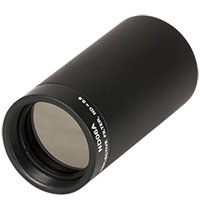



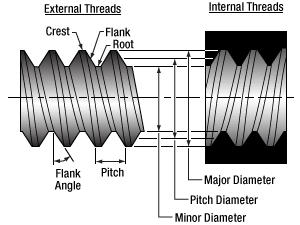
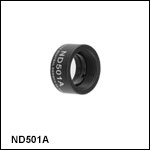
 Zoom
Zoom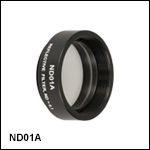
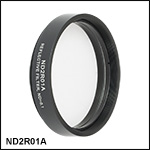
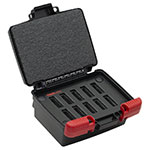
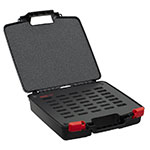

 Mounted Reflective ND Filters (N-BK7)
Mounted Reflective ND Filters (N-BK7)